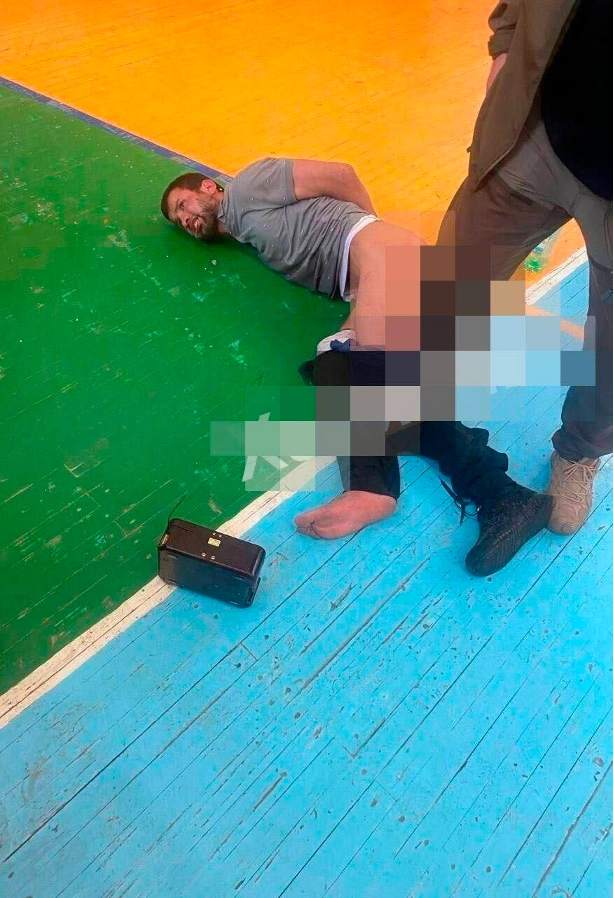One of the suspects in the March 22 Moscow concert hall attack was photographed lying on the floor with his pants down. Beside him is an electrocution device commonly used by Russia, known as “Tapik.”
The photo was shared on Sunday evening by GREY ZONE, a pro-Russian militant channel on Telegram, but it is not possible to ascertain if the group was the first to publish the photo.
JOIN US ON TELEGRAM
Follow our coverage of the war on the @Kyivpost_official.
The device seen at the bottom left of the photo is a Soviet TA-57 field telephone, nicknamed “Tapik,” which comes with a hand crank that can generate up to 80 volts of electricity. It is commonly used as a torture device by connecting the wires to the prisoner’s fingers, ears or genitals. At times the torturer will sprinkle the prisoner with water for extra effect.
The suspect’s physical position and state of undress suggest that the visible wires were connected to his genitals.
The device has also been widely used by Russian forces in Ukraine against civilians in a technique the soldiers nicknamed “call to Lenin” or “call to Putin.” There are documented cases of its use in Kherson and other regions of Ukraine under Russian occupation.
The bearded man depicted in the photo could be identified as one of the men arrested by Russian law enforcement agents on Sunday. During the initial interrogation upon his arrest, he said that he had been offered half a million rubles ($5,426) to carry out the attack.

Putin and Xi Praise Ties, Hours After Trump Sworn In
Some sources identified the man as Faridun Shamsiddinov, a Tajik national, but Kyiv Post is unable to independently verify his identity.
The suspects arrived at a court in Moscow today, where all of them appeared with swollen faces and distorted features, showing clear signs of beating and torture.
The attack at the Crocus concert hall near Moscow on the night of March 22 was one of the largest terrorist attacks in Europe, where gunmen, equipped with rifles and grenades, began firing on concertgoers and set the building on fire.
The attack killed more than 130 people at the time of writing, with more in critical condition.
On March 7 Western countries had warned of an imminent terrorist attack in Russia within 48 hours, which was shrugged off as a conspiracy theory by pro-Kremlin voices.
Islamic State – Khorasan Province (ISIS–K) claimed responsibility for the attack, but Russian President Vladimir Putin accused Ukraine of being complicit in the attack by creating a window for the suspects to escape into the country, which Kyiv categorically denied.
You can also highlight the text and press Ctrl + Enter


![[GRAPHIC] Photo Shows Moscow Attack Suspect With Pants Down, Wired to Electrocution Torture Device](https://static.kyivpost.com/storage/2024/03/25/60053ad557e42f2f1b699b15ad2dc15e.jpg?w=420&q=75&f=webp)








